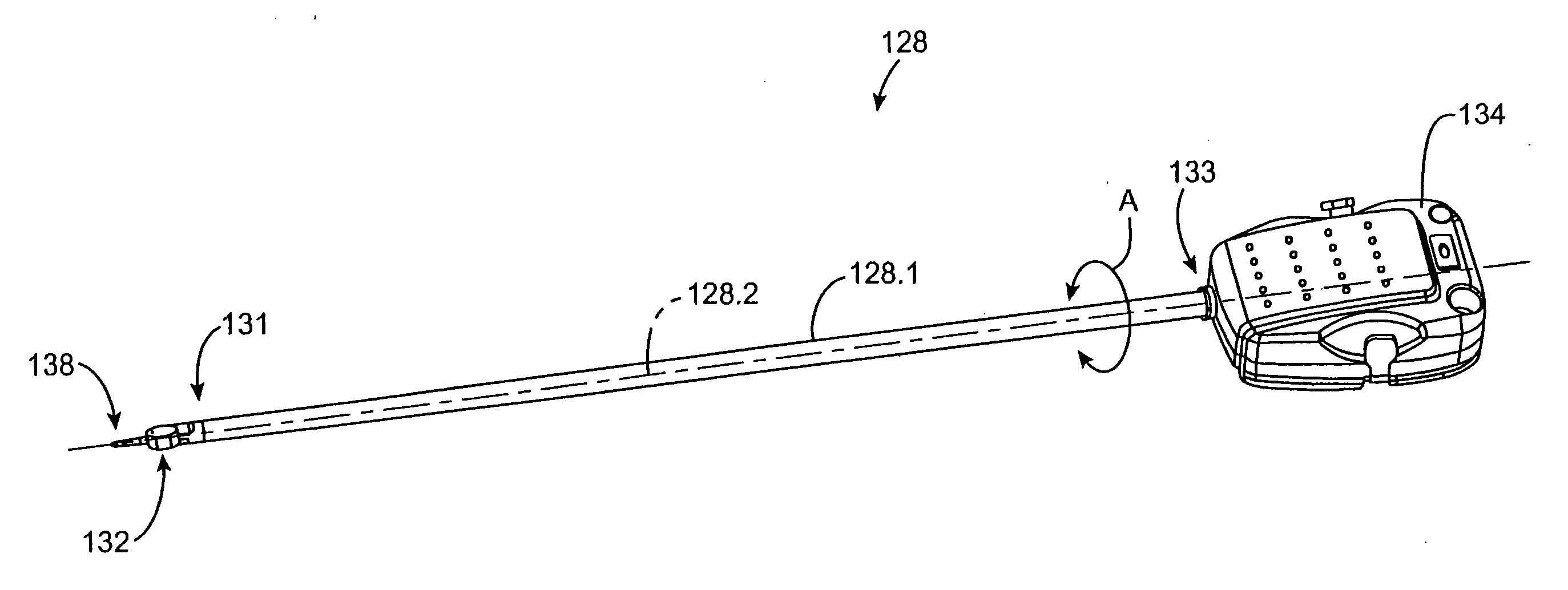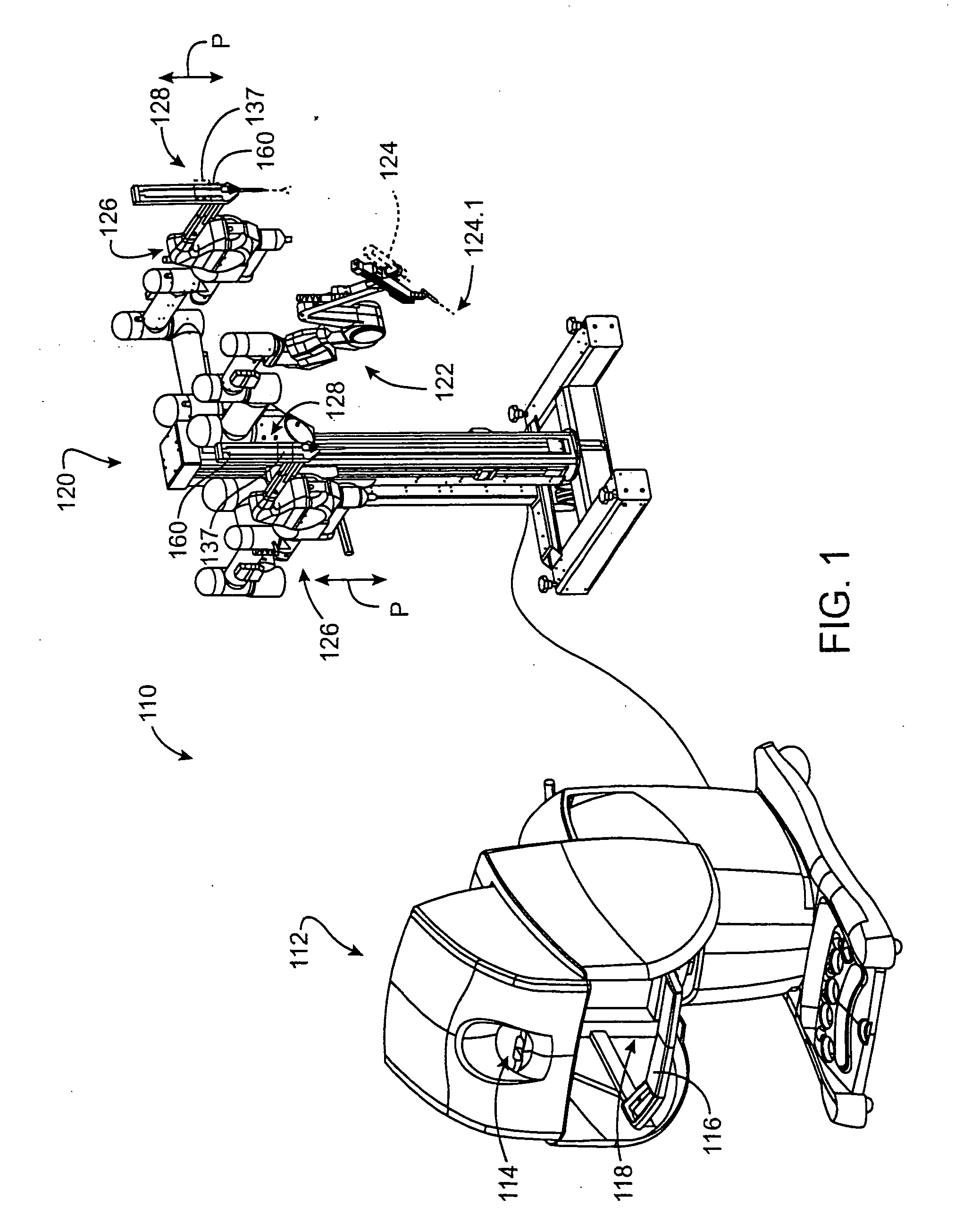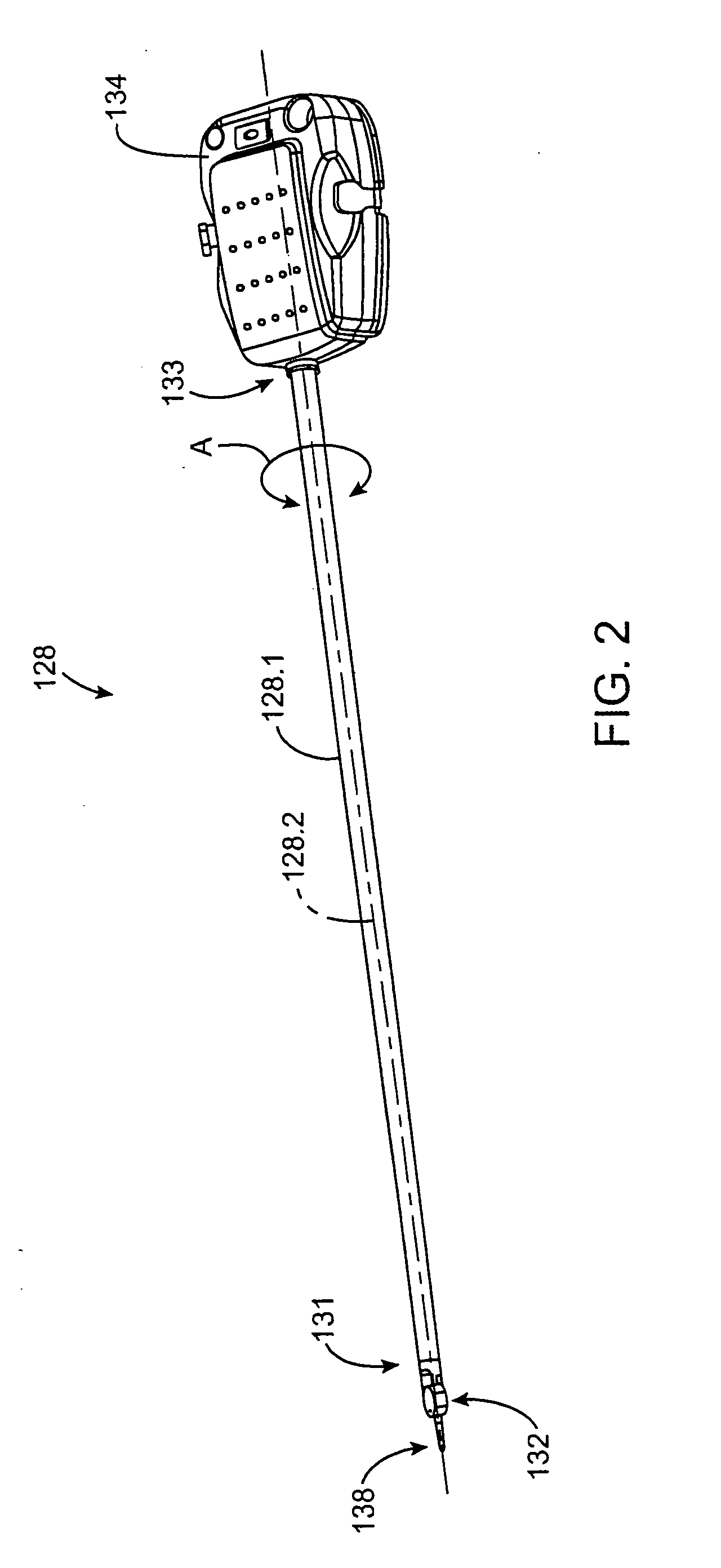Robotic tool with monopolar electro-surgical scissors
a surgical tool and electro-surgical technology, applied in the field of surgical instruments or tools, can solve the problems of denying the surgeon the flexibility of tool placement in open surgery, the current use of minimally invasive procedures, and traditional minimally invasive surgical instruments, so as to reduce tissue bleeding
- Summary
- Abstract
- Description
- Claims
- Application Information
AI Technical Summary
Benefits of technology
Problems solved by technology
Method used
Image
Examples
Embodiment Construction
[0044] The present invention provides methods, systems, and apparatus for use in robotically controlled minimally invasive surgical operations. In particular, electrosurgical cutting / shearing instruments and systems, as well as methods of performing minimally invasive robotic surgical procedures with such instruments are provided. The instruments of the present invention are capable of treating tissue with heat produced by electrical energy while cutting, shearing, grasping, engaging, or contacting treatment tissue. The electrosurgical treatment may further reduce bleeding of tissue by cauterizing tissue and coagulating blood, or achieve various other desired effects on the treatment tissue. The electrosurgical treatment is carried out in a safe and effective manner that incorporates a variety of safety features to prevent current leakage to non-target tissue so as to reduce collateral tissue damage, unwanted burning, or the like.
[0045] Referring now to FIG. 1, a robotic surgical s...
PUM
 Login to View More
Login to View More Abstract
Description
Claims
Application Information
 Login to View More
Login to View More - R&D
- Intellectual Property
- Life Sciences
- Materials
- Tech Scout
- Unparalleled Data Quality
- Higher Quality Content
- 60% Fewer Hallucinations
Browse by: Latest US Patents, China's latest patents, Technical Efficacy Thesaurus, Application Domain, Technology Topic, Popular Technical Reports.
© 2025 PatSnap. All rights reserved.Legal|Privacy policy|Modern Slavery Act Transparency Statement|Sitemap|About US| Contact US: help@patsnap.com



